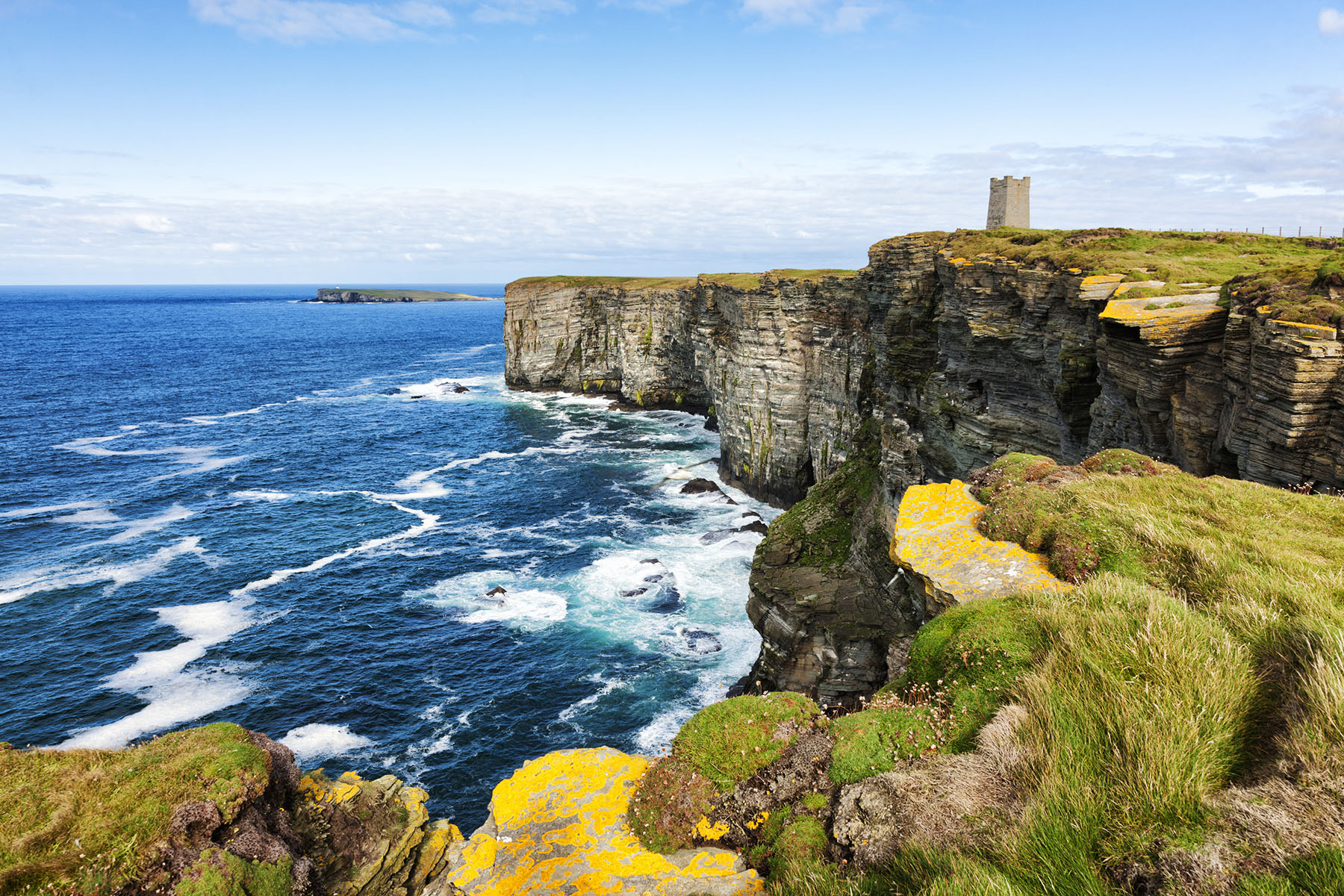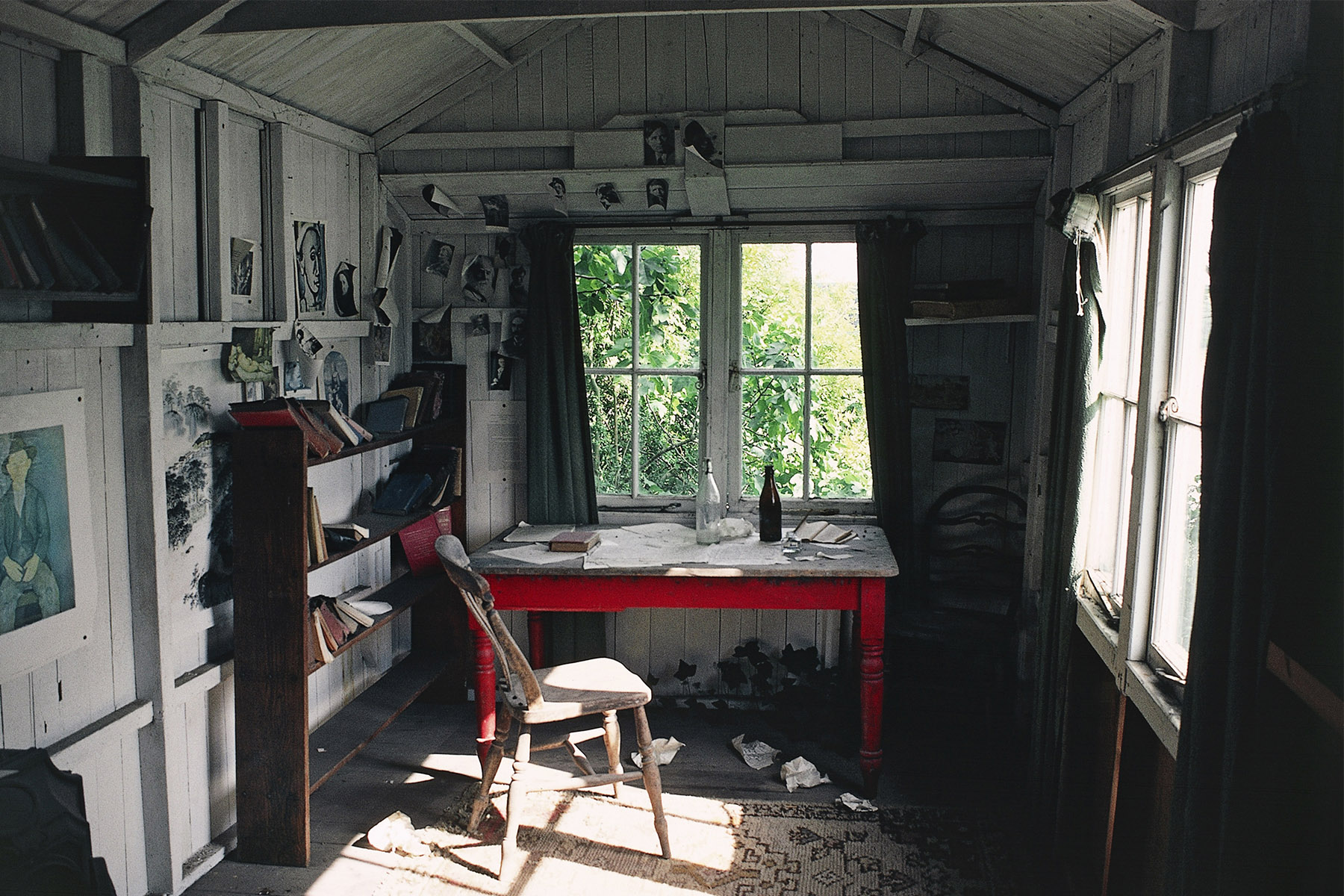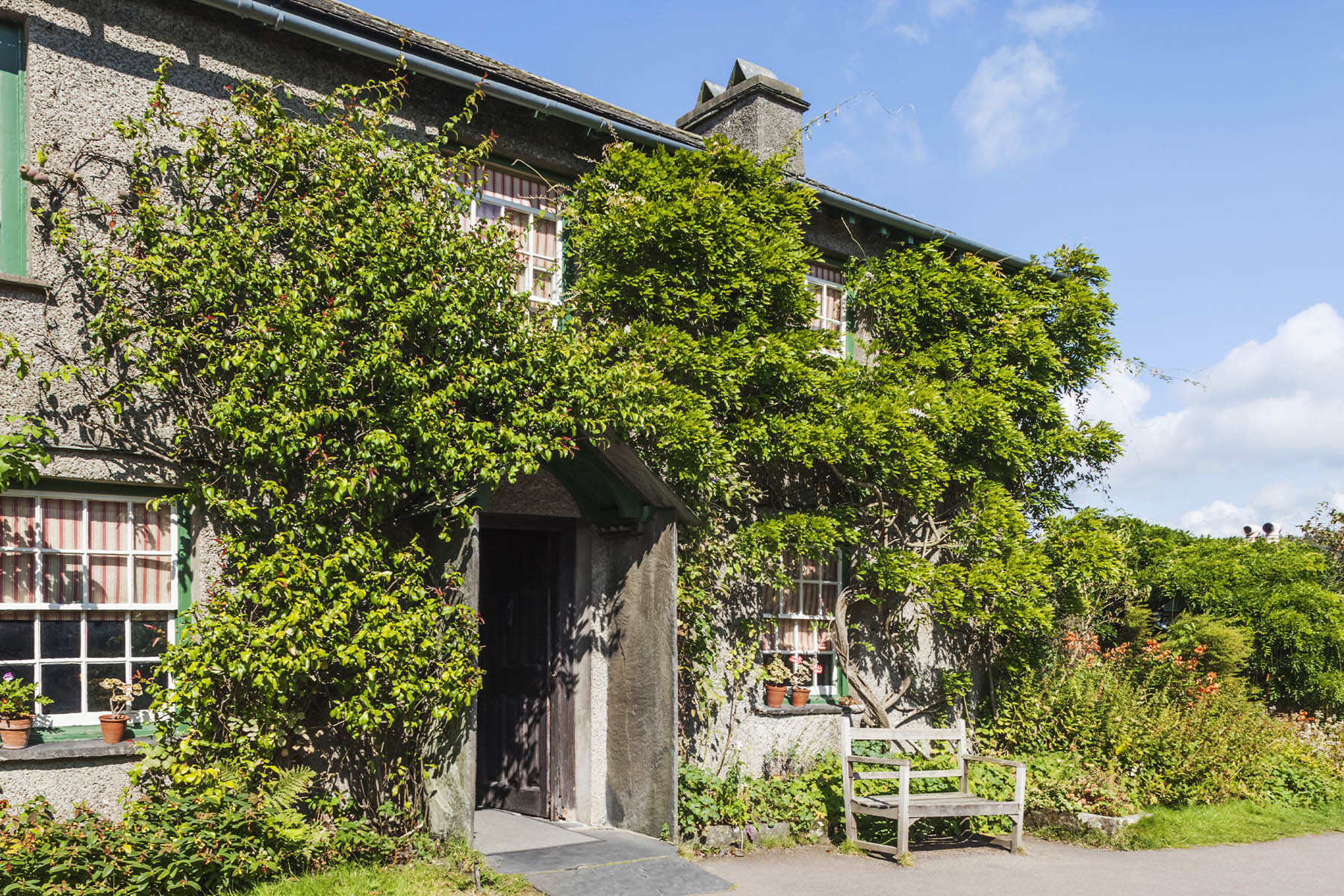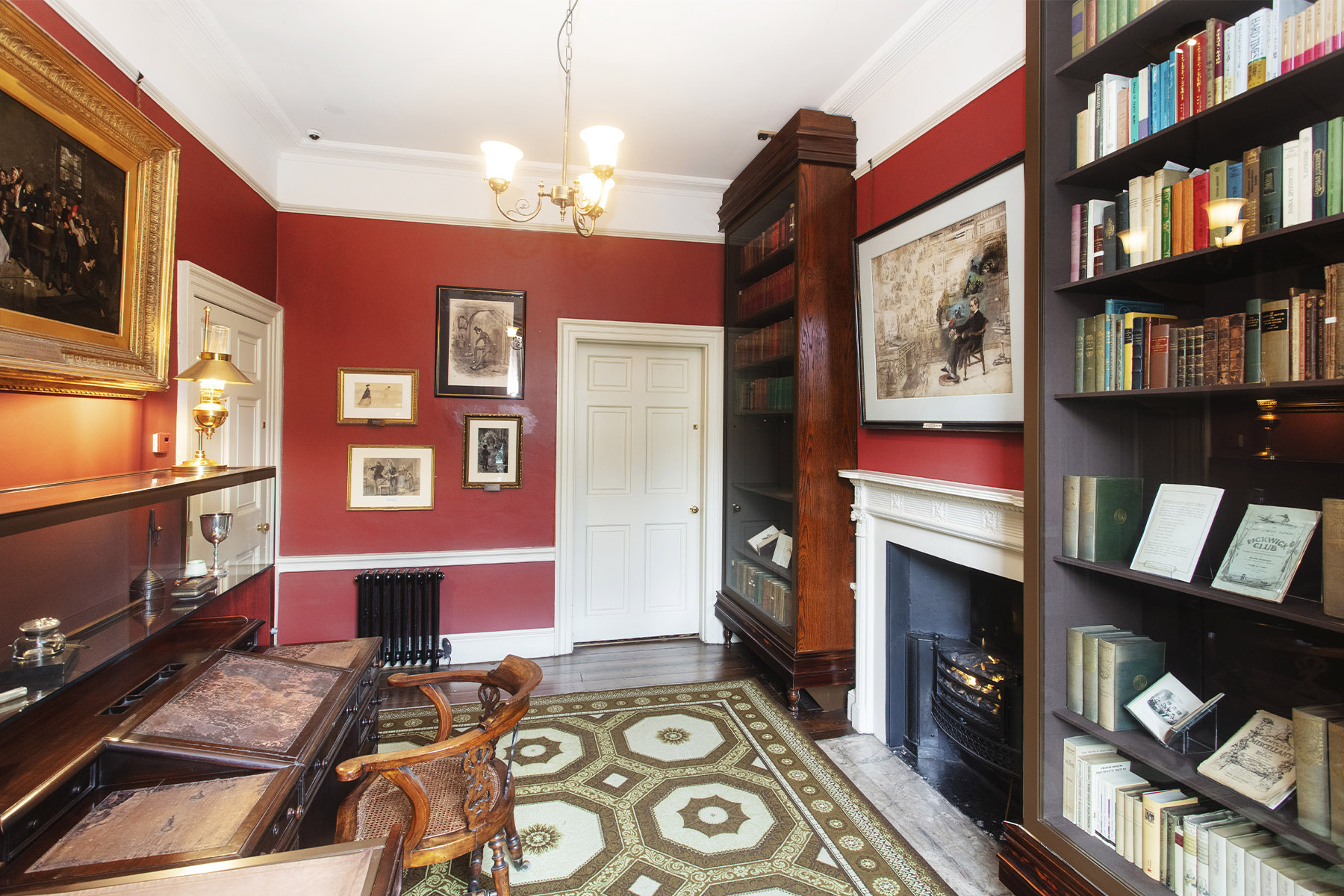
- Home |
- Search Results |
- The UK’s best literary days out for bookworms and readers
Whether you're after a cultural interlude on a summer holiday or piecing together a high-minded trip around the country, there are plenty of notable literary landmarks to pop on the to-see list. We've rounded up a few of our favourites in each corner of the country.
Scotland

Writers Museum, Edinburgh
Scotland’s capital is not hardly short of fascinating artefacts, architecture and museums, but bibliophiles would do well to pop the Writers Museum on their itinerary. Dedicated to those three giants of the country’s literature, Robert Burns, Sir Walter Scott and Robert Louis Stevenson, the Writers Museum is filled with manuscripts, personal items and writing desks. Plus, it’s free!
Take the book: Poems of Robert Burns selected by Ian Rankin
One for the more adventurous George Orwell fans: the ramshackle farmhouse known as Barnhill, on the edge of Jura, an island better known for whiskey off Scotland’s west coast. Even by Scottish standards, Jura is wild, and Barnhill was never homely. It’s a testament to Orwell, then, that so many of his London friends made the two-day journey to visit him. Barnhill is open to visitors - those who brave the two ferries, 20 mile drive and four mile walk.
Take the book: Nineteen Eighty-Four by George Orwell
Barrowland Ballroom, Glasgow
A potter around Glasgow can throw up some pertinent sites of inspiration. The Barrowland Ballroom in the East of the city is also a strong contender for its best venue; no wonder it formed such a vital setting in Trumpet by Jackie Kay. Head over to the city’s West End to wander the streets that inspired Leela Soma’s Bombay Baby. And keep an eye on Glasgow’s churches: it was an abandoned one that hosted the radio station in Psychoraag by Suhayl Saadi.
Orkney
There’s an otherworldliness to Orkney, the clutch of islands situated off the northeast tip of Scotland. The tree-less, windswept landscape, big skies and visible Viking history underfoot make for a long culture of storytelling. No wonder, then, it has become the setting for all manner of books, from The Metal Heart by Caroline Lea, Helen Callaghan’s Night Falls, Still Missing, Hermann Palsson’s Orkneyinga Saga and Amy Liptrot’s The Outrun.
Take the book: The Metal Heart by Caroline Lea
Northern Ireland
Seamus Heaney HomePlace, Belfast
The village of Bellaghy bore one of the country’s greatest poets in Seamus Heaney, and now HomePlace recognises and honours his life. HomePlace is a purpose-built arts and literary centre, located between Heaney’s two childhood homes in the village and a stone’s throw from St Mary’s Church, where he is buried. The bright and airy space reflects the landscape that inspired the Poet Laureate’s work, with a permanent exhibition that explores Heaney’s life and workshops to spark the work of budding writers.
Cave Hill, Belfast
Grab your walking boots, it’s time to take a hike. The moorland, heath and meadows of Cave Hill, which overlooks the city of Belfast, makes for an invigorating day out. But for Jonathan Swift it possibly proved far more life-changing. The local belief is that Swift looked upon the mountain’s “Napoleon’s Nose”, a cliff formation that looks uncannily like the military leader, and thought of a sleeping giant. His carriage then travelled up Lilliput Street in the city, which inspired the name of his tiny characters.
Take the book: Gulliver’s Travels by Jonathan Swift
Mourne Mountains, County Down
Further south, the dramatic beauty of the Mourne Mountains has been luring people away from Belfast for some fresh air and breath-taking views for centuries. It was in Ulster that a young CS Lewis grew up; he also returned for his honeymoon and other holidays during his adult life. "That part of Rostrevor which overlooks Carlingford Lough is my idea of Narnia,” he wrote to his brother. The most hardy will want to visit during snowfall, wardrobe transit optional.
Take the book: The Chronicles of Narnia by C. S. Lewis
Verbal Arts Centre in Derry/Londonderry
Tucked into the walls of Derry/Londonderry, ‘The Verbal’ was originally the First Derry National School and, in 2000, transformed into a centre for storytelling, research and education fuelled by a mission to help everyone tell their story, no matter their ability, background or circumstances.
Wales

Arguably the most famous writing shed in the country, Dylan Thomas’s boat house at Laugharne housed the famously debauched writer for much of his adulthood. It was to the Boathouse that he first discovered the Welsh village in 1934, having travelled by ferry at 19, and it was from the Boathouse that he travelled to New York, where he would die aged 39. These days, the Boathouse is visited by Thomas’s granddaughter Hannah, as well as members of the public, who are treated to a gallery and tea and cake.
Take the book: Portrait of the Artist as a Young Dog by Dylan Thomas
The many bookshops of Hay-on-Wye
Hay’s a dinky little town with more than 20 bookshops - and one of the most famous literary festivals in the world. From second-hand bookshops to ones specifically for children, poetry, sex and even the occult (!), you’d have to be the most reluctant reader not to come away with something.
Read more: 10 books by Welsh authors you should read
North West

Dove Cottage, Grasmere, Lake District
Wordsworth’s home and the seat of his inspiration has been something of a pilgrimage for poetry fans for decades. However, Grasmere is now the site of a snazzy new museum dedicated to the poet’s life as well as the beautifully immersive Dove Cottage, sensitively restored to reflect life as Wordsworth would have known it 200 years ago. It’s a wonderful way to spend an afternoon - rainy or otherwise.
Take the book: Home at Grasmere by Dorothy Wordsworth and William Wordsworth
Hill Top, Lake District
Beatrix Potter may be best known as the creator of the delightful, mischievous and memorable Peter Rabbit - among his anthropomorphic friends - but she was also an integral part of Victorian Cumbrian life. Hill Top is a 17th-century farmhouse and a time capsule of her life, complete with working farm, roaring fires and winding garden paths. This is where you can discover the woman behind the storybooks.
Take the book: Beatrix Potter Artist, Storyteller and Countrywoman by Judy Taylor
North East
It really is as good as it sounds: the National Centre for Children’s Books. Standing proud at the top of the cobbled streets of the bohemian Ouseburn Valley, Seven Stories is a Newcastle institution, a celebration of young readers and the books that inspire them. Changing exhibitions range from The Lost Spells by Robert MacFarlane and Jackie Morris to exploring the world of Elmer, while the museum’s permanent collection includes the archives of Michael Morpurgo and Judith Kerr.
Take the book: The Lost Words by Robert MacFarlane and Jackie Morris
The Lit & Phil
This much-loved, but easily overlooked library is one of Newcastle’s best-kept literary secrets. The Literary and Philosophical Society of Newcastle Upon Tyne, to give it its formal name, was founded in the 18th century and has been occupying its grand Greek Revival-style building for the past 200 years. With more than 1,000 books, winding staircases and a plentiful supply of Tunnock’s teacakes, it’s a fantastic place to spend some quiet time in the city.
South Shields Museum
Dame Catherine Cookson may have ended up as one of the best-read authors in the country, having racked up more than 100 million book sales during her life, but she had humble beginnings. Born to a single, alcoholic mother, Cookson was raised by her grandparents in Tyne Dock and left school at 14 to work in a laundry. Cookson wouldn’t write her first novel until she was 42, but her life and location in the North East became a great muse for her many novels. You can see artefacts from her life at the South Shields Museum.
Take the book: Kate Hannigan by Catherine Cookson
Yorkshire and the Humber
Whitby, North Yorkshire
Stand on the cliff tops which tower above the fishing village of Whitby and you’ll feel something of the atmosphere captured in Bram Stoker’s Dracula when the towns-folk gather in the storm to watch a mysterious ship, the Demeter, sail into its port. This pivotal moment in the book depicts Dracula’s arrival in England. There are plenty of shops and attractions dedicated to literature’s famous vampire and if you are brave enough then The Dracula Experience is a must!
Take the book: Dracula by Bram Stoker
Out on the wily, windy moors is a Parsonage that, even 200 years on, feels like it could be straight out of a Bronte novel. Sitting at the top of the winding cobbled street of the West Yorkshire village of Haworth, the Bronte Parsonage Museum library holds the world’s most comprehensive collection of letters and manuscripts. Nearby is the graveyard and the church, where most members of the family - bar Anne - are interred.
Take the book: Wuthering Heights by Emily Bronte
Shibden Hall, Halifax
Shibdon Hall’s most famous resident, Anne Lister, was an 19th Century landowner who detailed her extraordinary life in diaries written largely in secret code, which later revealed her lesbian sexuality. You might have spotted Shibden Hall in Sally Wainwright’s BBC drama Gentleman Jack which explored Lister’s adventures as well as her grand improvements for the estate she cherished - some of which you can still see today when you visit.
Take the book: Gentleman Jack by Sally Wainwright, Anne Choma
Midlands
The Roald Dahl Museum and Story Centre, Great Missenden
In the quaint village of Great Missenden lies the place where George’s Marvellous Medicine, The Twits and The Witches were dreamt up. In the village where Roald Dahl lived, interactive exhibits bring characters such as Fantastic Mr Fox and Matilda to life. Head outside, to the bottom of the garden to see Dahl’s famous writing hut, where his chair, paper and favourite things are all in place for you to explore.
Take the book: Matilda by Roald Dahl
Newstead Abbey, Nottingham
If Lord Byron were alive today, he’d be known as “jet-set”: the poet was famous for gallivanting around Europe. Nevertheless, he hailed from the Midlands, and his ancestral home was at the grand former monastery that still stands at Newstead. It’s a peaceful and atmospheric place, which holds more contemporary literary relevance, too: it’s to Newstead Abbey that a young Byron Lees takes their friends in Paris Lees’s memoir, What it Feels Like For a Girl.
Take the book: Selected Poems by Byron
London

Looking down on the rest of the city, Hampstead makes for a gorgeous day out: a handsome high street, great pubs, an enormous heath complete with swimming ponds - and Keats House. The prodigious - and tragic - poet wrote some of his best work at Wentworth House and it was here that he fell in love with Fanny Brawne, the muse who lived nearby. The Regency villa is filled with books and art exhibitions inspired by Keats’ work.
Take the book: Selected Poems by John Keats
73 Riding House Street, Marylebone
Look up in London and you’ll see far more than just pigeons. Blue plaques dot the city’s buildings, and it’s worth taking a stroll through Marylebone (home, also, to the Sherlock Holmes Museum at 221b Baker Street) to spot one on Olaudah Equiano’s house, on Riding House Street. Equiano was born in Nigeria and enslaved at 11. In 1789, he wrote his hugely important autobiography, The Interesting Narrative of the Life of Olaudah Equiano or Gustavus Vassa, the African. One of the earliest books published in Europe by a Black African writer, it helped to galvanise the abolitionist movement. In 2007, a first edition was carried in procession through Westminster Abbey to commemorate the bicentenary of Britain’s Abolition of the Slave Trade Act.
Take the book: Sold as a Slave, Oluadah Equiano
Dickens Museum, Russell Square
If you’re familiar with the work of Charles Dickens, chances are you’ll see London in a slightly different light. If you’re not, then the Dickens Museum can shed some. The museum is based at 48 Doughty Street, the family home where Dickens wrote Oliver Twist, Nicholas Nickleby and the Pickwick Papers. Complete with the trappings of the time, the museum also boasts a calm green escape in the form of its cafe and garden.
Take the book: Oliver Twist by Charles Dickens
South East
Lamb House was once owned by writer Henry James who penned many of his novels here before his friend E.F Benson took ownership of the property and was so taken by the idyllic cobbled streets of Rye he based his fictional town of Tilling here. He renamed Lamb House as Mallards, the home of Miss Mapp in his comic series, Mapp and Lucia. The House is now part of The National Trust and open to visitors where you can explore the authors' writing rooms and enjoy tea within the beautiful grounds.
Take the book: Mapp and Lucia by E F Benson
Monks House, Sussex
The home of Virginia and Leonard Woolf is a beautiful cottage located deep in the Sussex countryside that offers a glimpse into the lives of the author and her publisher husband who lived there for over 50 years. There are plenty of treasures, from their time in the house, from the artwork created by Virginia’s sister, Vanessa Bell that adorns the walls to the picturesque writing lodge nestled in the gardens.
Take the book: A Room of Ones Own by Virginia Woolf
Follow in the footsteps of Christopher Robin and take a walk through Hundred Acre Wood. There are two walks inspired by the books that put Ashdown Forest on the map, which take in some of the sites of Pooh’s adventures. Remember to take your Pooh sticks and a jar of honey just in case you spot that famous bear!
Listen to the audiobook: Winnie-The-Pooh, A. A. Milne read by Alan Bennett
East of England
Southwold
Fun fact: you can actually stay in PD James’s house. The crime writer had a holiday home on the market square in the picturesque Suffolk seaside town and it’s now available to rent out; only eagle-eyed residents might figure it out, though. Look for the propensity of James’s novels and the clues in the tapestry that hangs in the stairwell.
Regardless of where you stay in Southwold, there are other literary landmarks to uncover. It was here that George Orwell wrote A Clergyman’s Daughter, while living with his parents; take a boat down the river Orwell to get an understanding of Eric Blair’s pseudonym.
Take the book: A Clergyman's Daughter by George Orwell
The Brecks
Straddling the Norfolk-Suffolk border, this 400 square-mile expanse of forest and flint was where Helen Macdonald was moved to write H is for Hawk. It was here, to the Brecklands, as Macdonald calls them in the book, that she was drawn - “overtired, overwrought, unpleasantly like my brain had been removed and my skull stuffed with something like microwaved aluminium foil” - to see goshawks.
Take the book: H is for Hawk by Helen Madconald
South West
Hardy’s cottage, Higher Bockhampton
Built by his great-grandfather in 1800, this quintessential country cottage and garden is the birthplace of novelist and poet Thomas Hardy who lived here until the age 34. Hardy wrote two of his much-loved novels Far From the Madding Crowd and Underneath the Greenwood Tree within these walls before designing and building Max Gate located on the outskirts of Dorchester where he continued writing until his death in 1928. Both properties are owned by the National Trust where you can experience 19th century rural life which inspired so much of Hardy's work.
Take the book: Thomas Hardy by Claire Tomalin
Greenway, Devon
How could so much murder emerge from such an idyllic location? Agatha Christie herself called the holiday home “the loveliest place in the world”, and it’s difficult to disagree. The 18th-century house overlooks the Dart estuary and has gorgeous glasshouses and gardens. Inside, the house has been kept to reflect how Christie and her family would have seen it in the mid-Fifties, full of beloved collectables including first editions of her novels. Hardcore fans will want to check out the Boathouse, scene of the crime in Dead Man’s Folly.
Take the book: Dead Man’s Folly by Agatha Christie